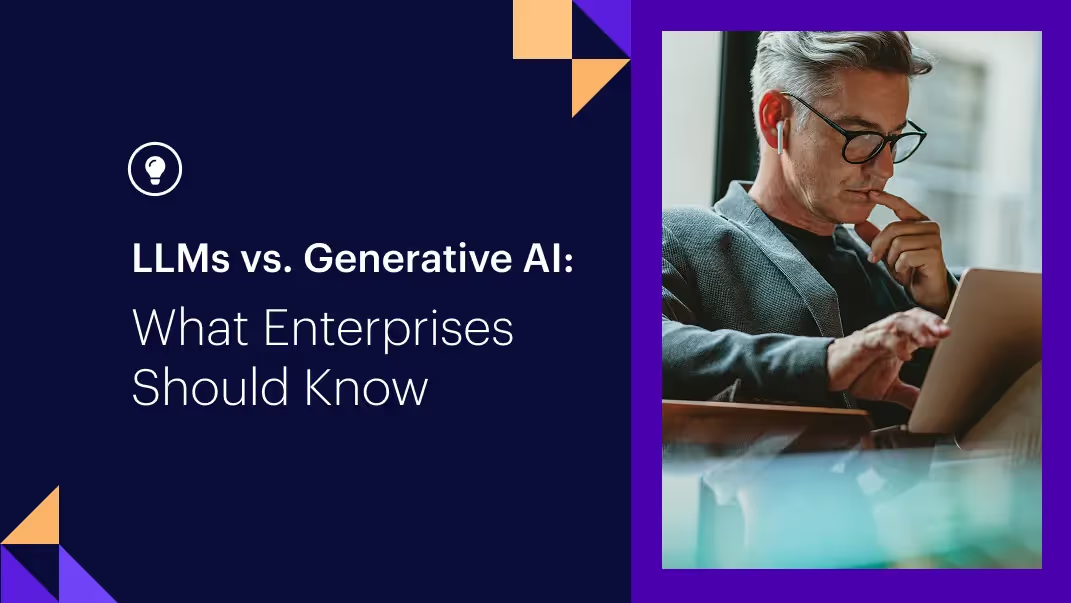AI voice assistants transform how businesses interact with customers, employees, and partners, making processes more seamless and engaging. From answering inquiries and scheduling appointments to troubleshooting technical issues, voice assistants are redefining communication efficiency. They allow enterprises to automate routine tasks while enhancing user experiences with natural, conversational interactions.
Developing a custom AI voice assistant for your business may seem complex, but it becomes a powerful way to address unique operational challenges with the right tools and strategy. Voice assistants using your specific business logic enable you to provide personalized support, integrate with existing systems, and maintain data control-all while reducing manual workloads and costs.
In this blog, we’ll guide you through creating an AI voice assistant that fits your business needs. You’ll learn about the tools and technologies required, the steps to build one, and the best practices to ensure success. Whether you’re just starting out or looking to enhance your current approach, this guide offers actionable insights to help you get there.

What is an AI Voice Assistant?
An AI voice assistant is a conversational tool powered by artificial intelligence (AI) that engages users through voice interactions. Unlike chatbots that rely solely on text-based communication, voice assistants use AI-powered text-to-speech to interpret spoken language, respond naturally, and execute tasks in real-time. This allows users to interact with systems hands-free, making communication more intuitive and efficient.
Voice assistants leverage natural language processing (NLP) to understand and interpret voice commands, breaking down spoken language into actionable insights. Machine learning (ML) algorithms enhance their ability to learn from previous interactions, adapt to user behavior, and refine responses over time. These capabilities enable virtual assistants to provide contextually accurate and personalized answers, whether assisting a customer with an inquiry or automating a business process.
While many people associate voice assistants with smart speakers, they play a crucial role in enterprise applications, particularly in interactive voice response (IVR) software. Businesses use AI-powered conversational IVRs to manage customer service interactions, automate call routing, and reduce wait times, allowing users to resolve inquiries efficiently without needing to speak to a human agent.
Voice assistants are a significant step forward in customer engagement and enterprise operational efficiency. They enhance the user experience by reducing the need for complex navigation or manual input while streamlining repetitive tasks. From improving accessibility to delivering faster support, this AI technology empowers businesses to offer seamless, scalable, and dynamic interactions. In the next section, we’ll dive into the essential tools and technologies that make these assistants work.
Important Tools and Technologies for Making an AI Voice Assistant
Building an effective AI voice assistant requires the right combination of tools and technologies. These key components work together to interpret voice commands, process data, and deliver seamless interactions. Let’s explore the critical technologies that power AI voice assistants and how they contribute to an exceptional user experience.
Natural Language Understanding (NLU)
NLU is at the core of any AI voice assistant, enabling it to comprehend and process human speech. It involves identifying user intent, extracting key details (entities), and generating responses that align with the context of the conversation. Traditional NLU approaches rely on predefined intents and training data, requiring extensive manual effort to fine-tune responses.
Our CALM (Conversational AI with Language Models) framework introduces a more advanced approach called Dialogue Understanding (DU), which goes beyond intent and entity classification. Instead of processing each user input in isolation, DU leverages LLMs to understand user intent in the full context of the conversation. This allows AI assistants to handle interruptions, digressions, and multi-turn exchanges with greater flexibility, making interactions feel more natural and dynamic.
Rasa’s flexible architecture ensures real-time contextual understanding and conversational repair, capturing nuanced cues like pauses and interruptions. This approach eliminates rigid intent-based models, allowing enterprises to build conversational AI solutions that adapt dynamically to user input. Whether integrating with existing systems or deploying for a new use case, our platform empowers enterprises to create voice-first solutions that align seamlessly with their workflows and business priorities.
Automatic Speech Recognition and Synthesis
Automatic speech recognition (ASR) and synthesis are critical for enabling smooth voice interactions. ASR converts spoken words into text, allowing the system to interpret user commands, while speech synthesis generates lifelike audio responses that mimic human tone and inflection.
When selecting voice recognition tools, multi-national companies businesses should prioritize:
- Accuracy: Ensuring the system correctly transcribes user input, even in noisy environments or with diverse accents.
- Language capabilities: Connect with your global customers in their language and customs.
- Real-time processing: Delivering responses quickly to maintain conversational flow.
- Adaptability: Handling industry-specific jargon, terminology, and interuptions.
For speech synthesis, the focus should be on creating natural responses that align with the brand’s voice. Speech-to-text tools offering customizable voice personas and multilingual support are valuable for global businesses.
Integration with Existing Systems
Seamless integration with enterprise systems is vital for voice assistants to be part of a larger ecosystem. With flexible APIs, voice assistants can connect seamlessly to existing customer support systems like CRM or ERP platforms.
Many businesses rely on collaborative development platforms like GitHub for version control, team collaboration, and sharing code. For enterprises building AI assistants, these tools streamline development workflows and improve collaboration across teams.
Rasa’s open, modular architecture integrates seamlessly with enterprise tools like CRMs, ERPs, and knowledge bases while enabling voice-first solutions. By supporting flexible deployment and iterative development, Rasa allows teams to build, test, and refine AI assistants more efficiently. This design reduces deployment time while supporting advanced capabilities like contextual rephrasing.
In the next section, we’ll guide you through the step-by-step process of developing your own AI assistant, from defining its purpose to ensuring a successful deployment.

A Step-by-Step Guide to Building an AI Voice Assistant
Creating an AI voice assistant for your business may seem complex, but breaking it into manageable steps can simplify the process. Businesses can streamline development and ensure long-term success by defining clear objectives, leveraging the right tools, and using platforms like Rasa. Here’s a tutorial on the essential steps to build an effective AI voice assistant.
Step 1. Define the Purpose and Scope
The first step in building an AI voice assistant is identifying its primary objectives. Consider what tasks your assistant will handle and how it will enhance your business operations. Will it assist with customer service, schedule appointments, or manage internal processes?
- Start small: Focus on a single use case, such as handling frequently asked user requests, automating appointment scheduling, or integrating with an IVR system to reduce hold times on common inquiries.
- Scale gradually: As your assistant proves its value, expand its capabilities to tackle more complex tasks, such as resolving multi-step customer issues, providing detailed product recommendations, or automating additional IVR workflows to increase efficiency and ROI.
Defining the scope ensures the assistant is purpose-driven and aligns with your business needs. For example, a telecommunications company might start by handling billing inquiries and plan recommendations before expanding to troubleshoot common technical issues, which often require more complex multi-turn interactions.
Step 2. Choose the Right Technology Stack
The right tools and platforms are crucial for building a reliable and efficient AI voice assistant. Businesses must consider data security, scalability, and integration capabilities to ensure the assistant meets their requirements.
- Rasa’s customizable platform: Companies can build business logic-aware assistants, from basic automation to advanced, context-aware interactions.
- Data security and compliance: For industries like BFSI and healthcare, our on-premise deployment options ensure sensitive customer data remains secure and compliant with regulations.
- Integration flexibility: Our transparent architecture simplifies connecting with existing systems like ASRs, CRMs, ERPs, or knowledge bases, creating a seamless user experience.
By choosing a scalable and flexible technology stack, businesses set the foundation for a voice assistant that grows alongside their needs.
Step 3. Develop the Conversational Flow
The design of your conversational flow determines how effectively the voice assistant communicates with users. A clear, intuitive flow ensures users can navigate conversations effortlessly while achieving their goals.
- Structure is key: Map out common scenarios your assistant will handle. For example:
- Greeting users and confirming their intent.
- Asking follow-up questions for clarity.
- Providing direct answers or escalating complex issues to human agents.
- Avoid common mistakes: Voice interactions require a different design approach than text-based assistants. Some key challenges include:
- Overly long responses: Text-to-speech (TTS) should be concise-long-winded messages can frustrate users and slow down interactions.
- Overcomplicated interactions: Unlike text, users can’t review previous messages, and there are no visual elements to assist them. Voice journeys must be simpler and more intuitive.
- Lack of voice-specific affordances: A good voice assistant should allow users to request repeats, detect interruptions naturally, and provide clarifications when needed.
- Leverage Rasa Studio:
- No-code user interface simplifies the design of conversational and voice-first paths, enabling assistants to respond dynamically to changes in user behavior, such as interruptions or topic shifts.
- Multilingual, multi-channel content management system allows teams to manage content for different channels within the same space, making it easier to deliver a consistent experience across voice, chat, and other modalities. This adaptability ensures a high-trust, seamless customer experience while supporting enterprise-grade scalability.
For example, a retail business might create flows that assist with product searches, suggest related items, and seamlessly guide users through checkout.
Step 4. Train the Voice Assistant with Data
Training your AI assistant ensures it can understand diverse user inputs and respond effectively. Using real-world data helps the assistant learn to handle various scenarios and improve its accuracy.
- Gather representative data: Use past customer interactions or simulate realistic scenarios to create a comprehensive training dataset.
- Refine language model performance: Ensure the assistant is trained on a language model that effectively handles ASR-transcribed text, accounting for speech variations and misinterpretations.
- Refine intent recognition: Teach the assistant to differentiate between similar queries, such as “What’s my account balance?” versus “How do I open a new account?”
- Include edge cases: Incorporate less common queries to ensure the assistant performs reliably across various interactions.
Continuous training keeps the assistant adaptive and aligned with user needs as business demands evolve.
Step 5. Test and Refine the AI Assistant
Before deploying your voice assistant, rigorous testing is needed to ensure smooth interactions and optimal performance. Testing should focus on refining conversational accuracy, system integrations, and user experience.
- Conduct usability testing: Simulate real conversations to evaluate the assistant’s ability to handle varied inputs and dialects while maintaining a natural dialogue flow.
- Assess ASR accuracy first: Ensure the automatic speech recognition (ASR) system accurately transcribes voice input before proceeding with broader usability testing. Poor transcription can disrupt intent recognition and overall assistant performance, making further refinements ineffective until addressed.
- Stress-test the system: Assess performance under high interaction volumes to identify potential bottlenecks.
- Focus on multi-use scenarios: Ensure the assistant works across different platforms, such as mobile apps, websites, and voice-enabled devices.
- Gather feedback: Incorporate insights from internal teams or pilot users to address gaps and improve functionality.
Rasa simplifies refinement with tools that allow seamless updates and iterative improvements, ensuring the assistant remains effective and aligned with business goals.
By following these steps, businesses can create an AI voice assistant that enhances customer experiences, automates routine tasks, and integrates seamlessly with their operations. In the next section, we’ll discuss best practices during development to maximize your AI voice assistant project.
Best Practices to Follow When Building Your Own AI Voice Assistant
Developing an AI voice assistant is a significant investment that can transform how your business interacts with customers and manages operations. However, success depends on getting the details right. By prioritizing security, personalization, and continuous improvement, you can build an assistant that delivers value while staying aligned with your business objectives.
Prioritize Data Security
Data security is paramount when building AI voice assistants, particularly in industries like BFSI, healthcare, and government, where privacy and compliance are non-negotiable. Customers want to trust that their sensitive information is handled securely, and businesses must meet strict regulatory requirements.
In addition to encryption and access controls, voice biometrics can enhance security by verifying users based on their unique vocal characteristics. This technology helps prevent fraud, streamline authentication, and reduce reliance on traditional PINs or passwords, making voice interactions both secure and seamless.
- Secure infrastructure: You can deploy on-premise with full control over your data, eliminating reliance on external cloud providers.
- Regulatory compliance: Industries governed by GDPR, HIPAA, or similar regulations can confidently deploy AI assistants, knowing Rasa supports strict compliance measures.
- Mitigate risks: Businesses reduce the likelihood of breaches or unauthorized access by storing and processing data within secure environments.
Prioritizing data security protects your business and builds customer trust-critical for long-term success.
Ensure Personalization
Generic, one-size-fits-all interactions fail to meet modern customer expectations. Personalization allows your AI voice assistant to create experiences that resonate with individual users.
- Context-aware conversations: Voice assistants should remember past interactions and adapt their responses accordingly, creating a seamless and intuitive experience.
- Behavioral insights: Use data to predict user preferences and proactively address their needs, such as suggesting relevant products or services.
- Adaptability: With Rasa’s voice-first capabilities and customizable platform, businesses can fine-tune the assistant’s responses to align with their brand voice, customer expectations, and conversational nuances like tone, sentiment, and flow interruptions.
Personalized interactions encourage stronger relationships, increasing customer satisfaction and loyalty over time.
Make Continuous Improvements
The work doesn’t end once your AI agent is live. Continuous optimization ensures the assistant evolves alongside your business and customer needs.
- Analyze performance: Use interaction data to identify areas for improvement, such as misunderstood queries or delayed responses.
- Refine voice accuracy: Incorporate the latest advancements in voice AI to ensure the assistant’s speech recognition and synthesis capabilities stay sharp.
- Iterate based on feedback: Regularly collect user and team feedback to address pain points and fine-tune conversational flows.
- Stay ahead of trends: Prepare for emerging technologies like multilingual support and voice sentiment analysis.
By continuously improving your assistant, you ensure it remains relevant, effective, and capable of meeting future challenges.
Build an Enterprise-Ready AI Voice Assistant with Rasa
Developing an AI voice assistant allows businesses to improve customer engagement, streamline operations, and reduce manual workloads. The right approach combines advanced tools, thoughtful design, and continuous optimization to create solutions that deliver value and adapt to evolving needs.
With Rasa’s platform, enterprises gain the flexibility, scalability, and deep contextual understanding needed to build voice-first AI assistants. Our solutions handle complex interactions seamlessly, leveraging hybrid technology to blend NLU reliability with advanced LLM integrations, creating a high-trust environment for users.
Our on-premise deployment options ensure data security and compliance for highly regulated industries, while features like automated conversation repair keep interactions smooth and natural. By integrating easily with existing systems, Rasa makes creating assistants that align with business workflows and objectives simpler.
Take control of your conversational AI strategy and create a voice assistant to meet your organization’s challenges. Learn more about how Rasa can help and start building smarter, more reliable voice AI today.





